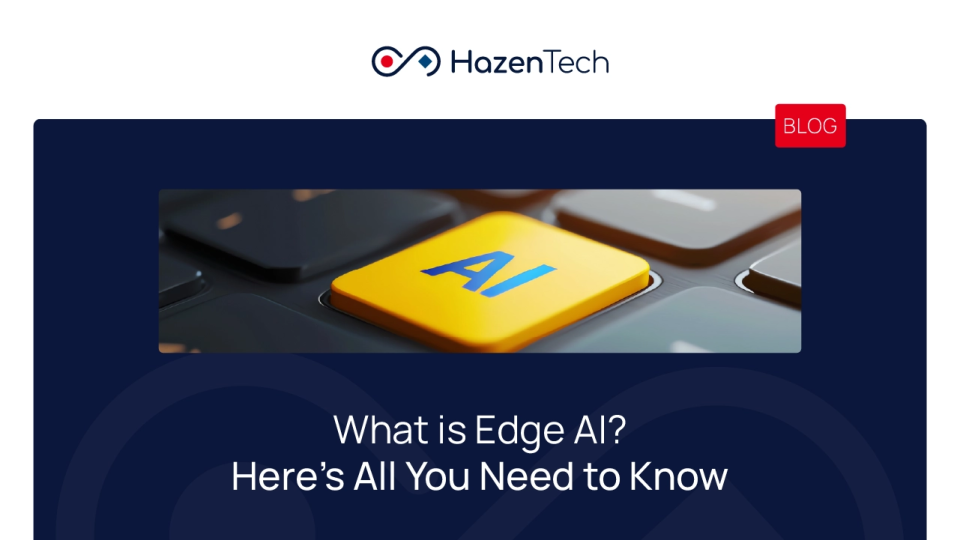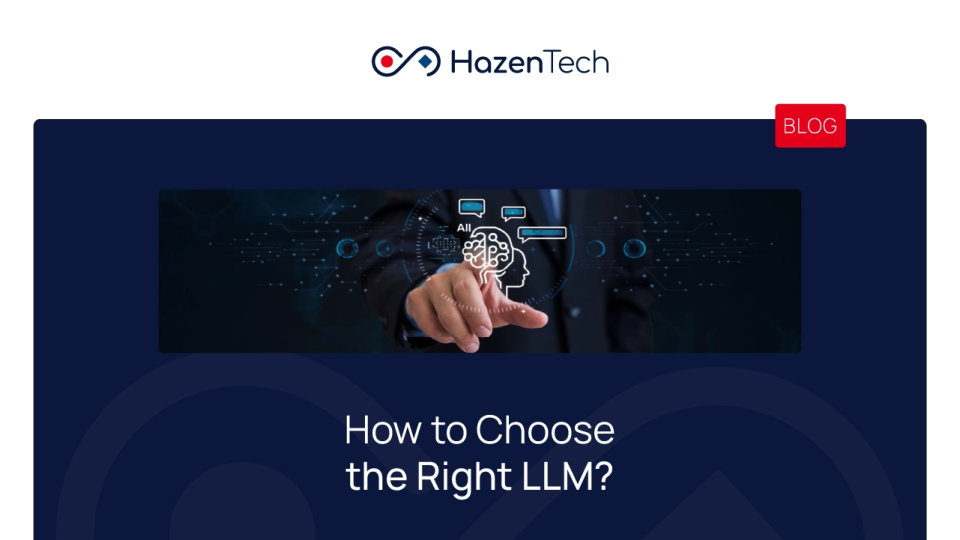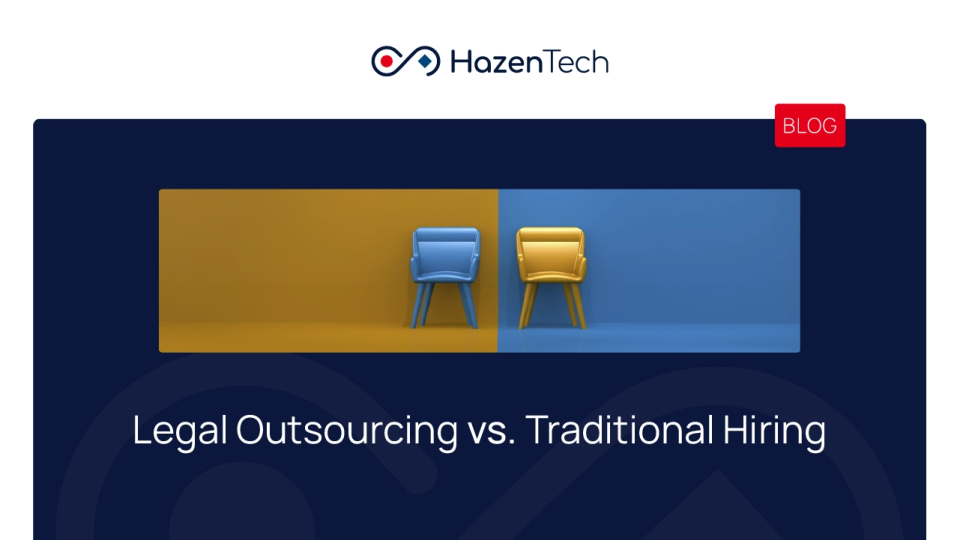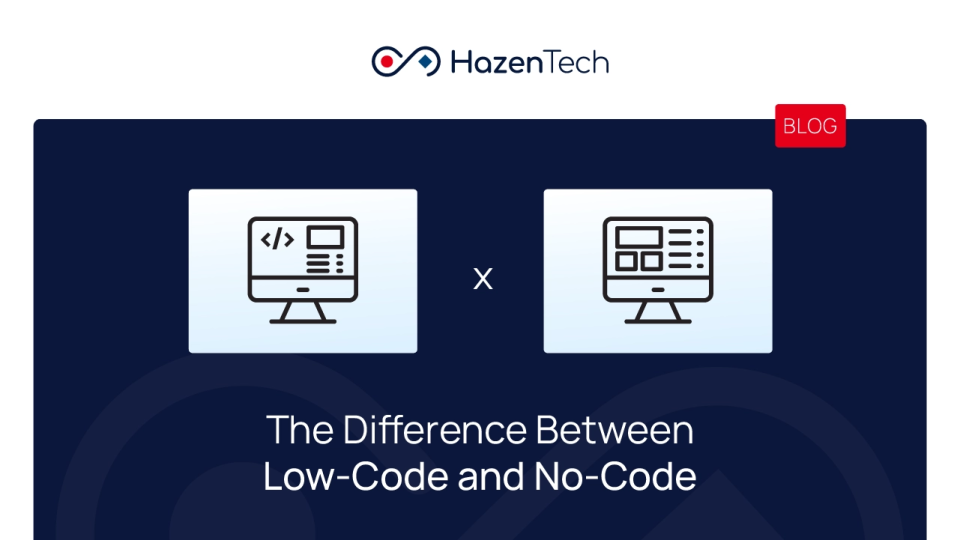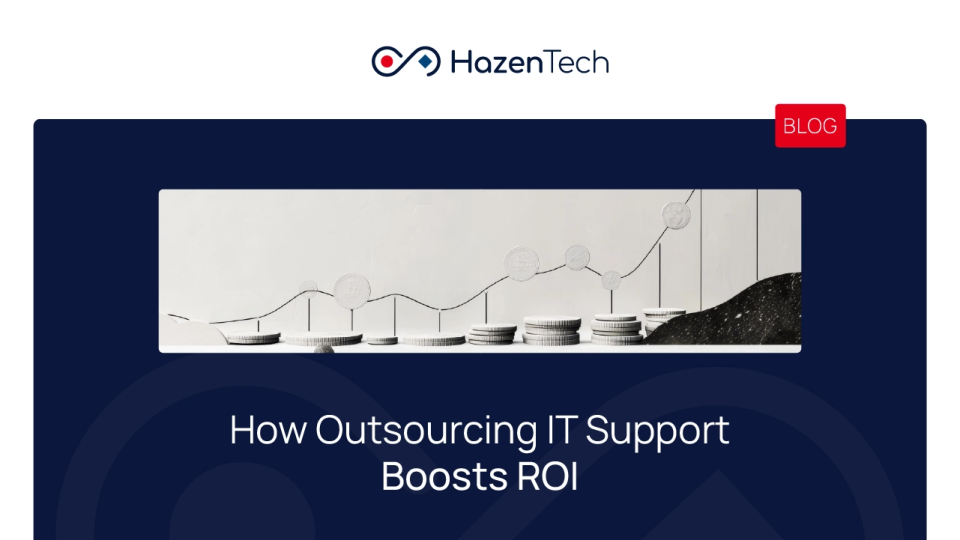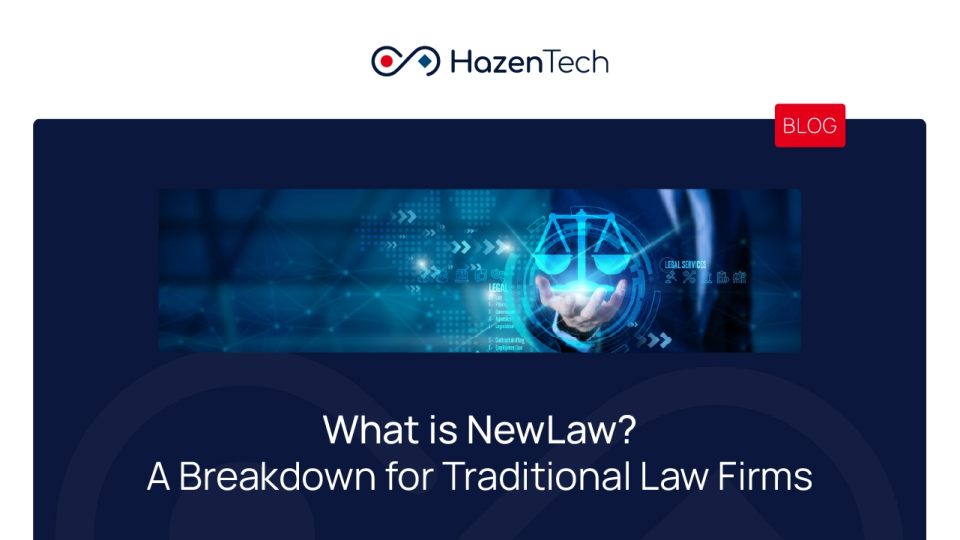Edge AI refers to running AI models directly on devices like sensors, cameras, robots, vehicles, or wearables instead of sending data to the cloud for processing. The model lives on the device and makes decisions locally. That distinction may seem small, but it has major implications. Local inference removes network delays, keeps sensitive data on-device, and allows systems to act instantly.
In 2025, Edge AI matters more than ever. The growth of IoT devices has exploded, 5G networks are becoming widespread, and industries increasingly demand immediate, yet reliable decisions. Cloud AI alone can’t handle this. Round-trip delays or intermittent connectivity can make systems unreliable, especially in high-stakes environments like autonomous vehicles, medical monitoring, or industrial robotics.
This blog will explain why Edge AI is gaining traction, how it differs from cloud and distributed AI, and the benefits it delivers. You’ll see Edge AI implementations, get a clear picture of its architecture, and understand the challenges teams face when deploying models. Finally, we’ll cover practical advice for choosing the right Edge AI solution for your use case.
Edge AI vs Cloud AI vs Distributed AI
AI models aren’t created equally or for the same purposes. And, besides their actual purposes, the way you run them across models makes a difference, too.
Cloud AI lives in massive data centers. It’s like huge GPU clusters crunching heavy models. Although they’re perfect for training and analysis, but what if you ask them to respond in real-time? They won’t even promise a millisecond-level decision. Network delays and data transfers make it too slow for things like autonomous cars or industrial robots.
Edge AI flips that script. The AI lives on your device (camera, wearable, robot, you name it). So, decisions happen locally and no dependency on the cloud remains. That means instant responses, better privacy, and freedom from network quality. It’s like having a tiny, smart brain right where you need it.
Distributed AI sits somewhere in the middle. It spreads tasks across devices, gateways, and cloud servers. You get the best of both worlds: heavy lifting in the cloud, and quick reactions at the edge. Large fleets of IoT devices, smart cities, or connected factories often run this way.
Here’s a simple way to think about it: if you need lightning-fast reaction, go edge. If you need deep analytics on massive datasets, go cloud. If you need a mix of both, distributed is your friend.
Key Benefits of Edge AI
Let’s get to the question we’ve been waiting for. Why should we use Edge AI? Well, in simple terms, it’s not limited to running only on models or devices. Edge AI has some measurable advantages that vary across industries. Lightening fast responses, cost savings, better privacy, you name it. So, industries leveraging AI development services are already way ahead of their competitors. Here’s a breakdown of the core benefits.
Low Latency
Edge AI delivers millisecond-level responses by processing data locally on devices. Applications like autonomous vehicles, factory robots, and medical monitoring rely on this speed to prevent accidents, reduce errors, and improve safety. Instant decisions at the edge outperform cloud-dependent systems, where network delays make immediate actions impossible.
Bandwidth Efficiency
Processing data locally means only insights or anomalies are sent to the cloud. That’s a reason why security cameras, industrial sensors, and wearables avoid streaming massive raw datasets. This reduces network congestion, cuts storage costs, and improves performance. Edge AI implementations enable functional monitoring of large-scale IoT deployments while reducing infrastructure load.
Data Privacy
Edge AI keeps sensitive information on-device, such as personal health data, financial transactions, and private industrial metrics. This approach reduces regulatory risk and exposure to breaches. When devices start making decisions locally, compliance with privacy regulations is ensured. It also enables analytics and automation without sending raw data to external servers.
Cost Control
Reducing cloud compute, storage, and data transfer lowers operational costs. Imagine how much retail chains, factories, and hospitals save by processing locally with thousands of connected devices. Edge AI implementations minimize unnecessary cloud dependency while maintaining performance. This makes high-volume analytics more cost-effective across industries.
Offline Reliability
Edge AI continues functioning even with intermittent or no connectivity. So, areas with signal or connectivity issues, like remote industrial sites, rural healthcare centers, or offshore sensors, can operate independently of the cloud. It helps make critical decisions, alerts, and actions occur instantly, even when cloud access is unreliable or delayed, to establish system resilience.
Energy Efficiency
Models optimized for NPUs, MCUs, or ASICs reduce power consumption on edge devices. You get an extended operational life for all wearables, drones, and battery-operated sensors. Also, efficient local inference lowers energy use, decreases heat generation, and ensures sustainable performance. Best of all? There’s no compromising quality or accuracy.
Edge AI for Real-Time Analytics
Edge AI for real-time analytics means devices analyze data as it’s generated and act immediately. Cloud-only systems can’t reliably achieve millisecond-level response times due to network delays. Edge AI, on the other hand, lets devices make decisions on the spot, which is critical in scenarios where speed and accuracy are non-negotiable.
Instant Decision-Making
Devices such as autonomous vehicles and industrial robots require sub-100ms reactions. Edge AI performs inference locally, enabling it to detect obstacles or anomalies instantly. Waiting for cloud processing could result in collisions, downtime, or safety hazards. Real-time analytics at the edge ensures fast, reliable responses where every millisecond counts.
Streaming Data Analysis
If you’re curious about its efficiency, Edge AI can continuously process data from multiple sensors simultaneously. For example, in manufacturing, vibration sensors detect early signs of equipment failure. Similarly, in healthcare, wearables can quickly detect irregular heart rates. The beauty of processing locally is that you receive relevant alerts that are sent upstream. This keeps networks efficient and also maintains situational awareness.
Predictive Alerts
Edge AI reacts to anticipate problems. Some applications include industrial machinery that can trigger predictive maintenance before failure. Also, smart city traffic systems can dynamically adjust traffic lights to prevent congestion. So, on-device analytics ensures these alerts are immediate and actionable.
Privacy-Conscious Insights
Edge AI for real-time analytics keeps sensitive data on the device. Patient vitals, financial transactions, or security footage never leave the edge unless necessary. It helps organizations maintain compliance with privacy regulations while still leveraging actionable insights for instant decisions.
Mission-Critical Reliability
Devices need to work even in the event of network failure. Consider rural hospitals or offshore energy platforms where connectivity issues remain a big problem. Thankfully, Edge AI makes real-time analytics reliable in any environment and ensures critical systems continue analyzing and responding without interruption.
Implementations & Use Cases Across Major Sectors
Edge AI implementations solve problems in industries where speed, accuracy, and data privacy are critical. Organizations minimize latency, reduce bandwidth costs, and gain insights instantly. Let’s explore five sectors where Edge AI is making a tangible impact.
Manufacturing & Industrial IoT
The industrial and manufacturing sectors use Edge AI for predictive maintenance, with the help of vibration sensors and thermal cameras. They catch equipment anomalies before malfunctions. These quality inspection systems analyze production lines on-device and can incredibly spot defects in milliseconds. This reduces downtime, lowers scrap rates, and eliminates the lag of sending high-volume sensor data to the cloud.
Healthcare
When we talk about the health sector, the most prominent thing that comes to mind is wearable devices for heart rate, glucose levels, and oxygen saturation. You can check the results directly on-device. Portable diagnostic tools run Edge AI to detect arrhythmias or irregular vitals instantly. So, in case there’s a health concern, the caregivers are alerted before emergencies escalate. Hospitals use bedside monitors with on-device analytics. Once again, it minimizes cloud dependency and ensures patient data never leaves the premises.
Automotive & Mobility
Autonomous vehicles process data from LIDAR, radar, and cameras locally. This enables collision avoidance and real-time navigation. Fleet management uses Edge AI to monitor vehicle health and optimize routes on the fly. Traffic systems use edge-enabled cameras to dynamically adjust signals, prevent congestion, and improve road safety.
Legal Industry
Edge AI assists law firms with on-device document scanning, instant OCR, and contract analysis. It preserves sensitive legal files, confidentiality and regulatory compliance. E-filing systems use Edge AI to validate documents before submission, and on-device analytics highlight critical case information. Overall, it speeds up review cycles and reducing manual effort.
Smart Cities & Infrastructure
Edge AI powers traffic monitoring, public safety cameras, and environmental sensors. Interestingly, it adjusts streetlights based on pedestrian and vehicle flow. Similarly, industries use air quality monitors to detect local pollution spikes and trigger alerts. Emergency detection systems can automatically dispatch responders without relying on the cloud, ensuring city services remain effective even during network outages.
Technical Challenges & Limitations
Edge AI does offer multiple advantages, but if you’ve made up your mind to implement it, there are specific technical challenges you need to know. Devices have constraints, environments vary, and maintaining performance over time requires careful planning. Once you’re aware of what’s about to come, you can experience the advantages of Edge AI more easily.
Compute Limits
Edge devices often have limited RAM, storage, and processing power, which is why running large models directly on small devices can lead to slowdowns or crashes. You need to balance model size and complexity with hardware capabilities. Only then can you achieve device optimization with excellent performance capabilities.
Model Optimization Required
Edge AI models need techniques like quantization, pruning, and weight sharing to run efficiently. Without these, inference could be too slow or power-hungry. You’ll receive accurate analytics only with proper optimization while staying within memory, power, and thermal budgets.
Hardware Fragmentation
Devices use NPUs, GPUs, TPUs, or MCUs, each with its own runtime and software stack. A model optimized for one chip may fail or underperform on another. Managing hardware diversity is essential, especially for fleets with mixed devices.
Secure Updates
Updating models on thousands of edge devices is tricky. Over-the-air updates must be encrypted, verifiable, and include rollback mechanisms. Without proper security, updates can break systems or expose sensitive data.
Model Drift
Sensors behave differently as they age, and the environment around them never stays the same. A model that worked flawlessly last year can start slipping without anyone noticing. Regular checks and minor, steady updates keep Edge AI predictions sharp instead of letting accuracy drift off over time.
Deployment at Scale
Managing thousands of devices across different locations can get messy fast. You deal with deployments, device health, and keeping performance consistent everywhere. Solid planning and intelligent automation help you avoid bottlenecks, surprises, and the headaches that come with scaling an entire fleet.
Future Trends & Edge AI Roadmap
Edge AI is expanding rapidly. According to Precedence Research, the global Edge AI market is expected to reach $143.06 billion by 2034, up from $25.65 billion in 2025, with a CAGR of 21.04%.
On the hardware front, the SHD Group projects Edge‑AI SoC (system-on-chip) shipments will rise from ~2.24 billion units in 2024 to 8.7 billion by 2030, with a CAGR of ~25%.
Meanwhile, the Edge AI software market (platforms, frameworks, toolkits) is forecast to grow from about $1.95 billion in 2024 to $8.91 billion by 2030, at a CAGR of 29.2%.
These numbers reflect several key trends:
- TinyML & On‑Device Learning: As more compact edge devices get more innovative, tiny, efficient models (quantized, pruned) will become standard.
- Federated & Hybrid Training: Devices will train locally, sync insights to the cloud, then pull optimized models, which will balance privacy with accuracy.
- New Edge Hardware: Expect a surge in NPUs, low-power AI chips, and custom silicon built specifically for on-device inference.
- 5G/6G–Enabled Edge Clusters: Faster, more reliable networks will fuel distributed AI, especially in smart cities and industrial settings.
Summing Up
In short, by 2030, Edge AI will be deeply embedded in devices. Its growth trajectory is backed by concrete demand, hardware innovation, and real deployment across industries.
Devices with on-device intelligence make instant decisions, protect sensitive data, reduce costs, and keep systems running even when connectivity falters. Cloud AI still handles heavy training, historical analytics, and large-scale computation.
The key takeaway: your Edge AI strategy should start with use-case clarity. Identify latency, privacy, and accuracy needs first. Then match models, hardware, and deployment methods to those requirements. Think about updates, monitoring, and fallback plans before rolling out fleets of devices.
Across industries, from manufacturing and healthcare to automotive, legal, and smart cities, Edge AI implementations prove one thing: speed, reliability, and local intelligence matter. Teams that plan carefully, optimize models, and monitor devices continuously will unlock the true potential of Edge AI without risking performance or compliance.
